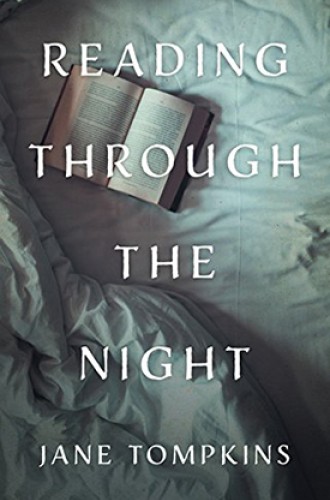When Jane Tompkins couldn’t move, she read
Confined by illness, the feminist literary scholar dove into the complete works of V.S. Naipaul and Paul Theroux.
On one level, Jane Tompkins’s memoir is about reading. She analyzes the complete works of two authors, V. S. Naipaul and Paul Theroux, and along the way she cites a broad swath of writers, from journalists and mystery writers to the poet Emily Dickinson.
On another level, it’s a story of illness. “For many years I’d had a little-understood illness called myalgic encephalomyelitis . . . known until recently as chronic fatigue syndrome.” The illness shapes the author’s situation and many of her metaphors. Unlike many illness memoirs, however, Tompkins’s does not probe medical research or the historical context of her illness; illness is simply the big, bold fact that stands behind everything else.
Tompkins is a feminist literary critic whose renown is built on a handful of books and the essays of the 1990s, “Me and My Shadow” and “The Way We Live Now,” both of which challenged the modern university from within. She tells her story with the perspicacity of a postcolonial literature scholar, and she structures it like a detective novel. Of all the books she reads while reclining on the couch or lying in bed, she wonders, why does Theroux’s Sir Vidia’s Shadow capture her? How does it restore energy even while it reveals hard truth after hard truth? And what message does it have for the reader?
The answers may be less important than the process of seeking them. Tompkins models a way of reading that requires the reader to be vulnerable: look for the subtexts and various perspectives embedded in the writer’s story and then turn the camera around and look at your own life. Such reflection may lead to envy (and Tompkins is honest about her envy of other writers), to gratitude, or even to a revelation.
Confined by her illness much of the time, Tompkins reads voraciously, even as she laments the passive nature of reading. As she reads, she finds in her suffering something like a gift. It’s a gift that she didn’t wish on herself, she says, but she has long desired the result: a fading of the ego that leads to deeper interaction with texts and new ways of making meaning. As her physical agency wanes, she draws closer to the page, craving a real encounter with the inner lives of characters. She’s no longer reading to gain tenure or win an academic prize; now she’s reading for her life.
Tompkins uses the term etheric body in attempting to explain the mysterious, ethereal process by which books can energize her even as her physical body weakens.
For me, whatever else books may be, they were, and are, an energy source. It’s as if I’ve acquired a second, invisible body, called into existence by my illness. The etheric body knows what it likes and will feel alive and ready or listless and weak, depending on the writer. I can feel joy and even bliss from reading a particular passage, and a book can cast me down into the pit and leave me there, sometimes for days.
Tompkins doesn’t name this process as spiritual. But to my mind, it resembles the religious striving of someone like Simone Weil, or the medieval mystics who push their bodies to extremes while reaching for God, or a pilgrim walking the stations of the cross.
Some of the most memorable passages of the book focus on marriage: first those of Naipaul and Theroux, and then Tompkins’s own. (Her husband is the famous literary critic Stanley Fish.) She leads readers into multiple layers of meaning of love and forgiveness as perspectives shift, new memories appear, and images expand, illustrating the power of one large story that overcomes, or at least enlightens, a host of smaller and meaner ones.
I found myself in awe over one issue that Tompkins does not directly address. The process of writing a book, even if one is hale and hearty in one’s sixties, wracks not only the mind but the body. Hours in front of a computer screen, or even writing with pen, extract a physical price. Even reading becomes physical, requiring long hours of concentration that induces muscle fatigue. For academics, aging is often literally a pain in the neck—as well as the shoulders and the arms.
Tompkins credits the etheric body with helping her to read, but that body’s power to write amid chronic illness and aging is even more impressive. How did she do it? My hunch is that she was feeling the hot breath of mortality. Her last subject in the book is age and dying.
Naipaul died soon after this book was published. Tompkins’s last words focus on Theroux, who turned 78 this year, shortly after Tompkins turned 79. She writes of Theroux’s last book: “Mother Land provides evidence that growth in self-understanding can be achieved at a late stage of life . . . evidence that the story is not over yet and that new insight and change can take place until the end.” These words apply equally well to Tompkins’s memoir.






